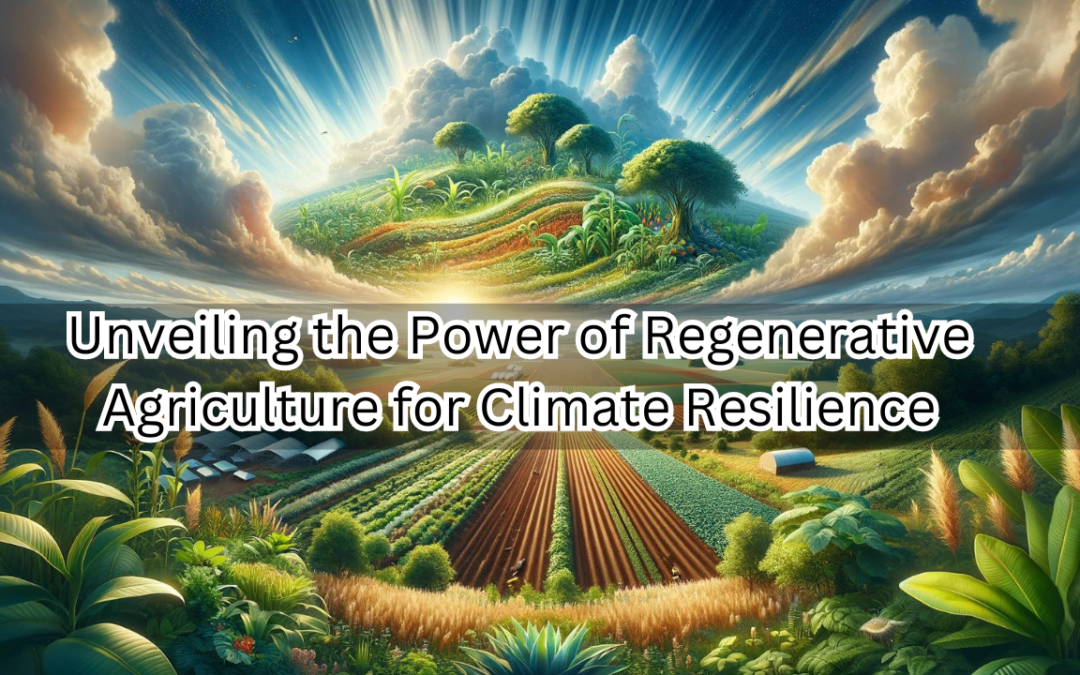In today’s environmental landscape, regenerative agriculture emerges as a beacon of hope, offering a transformative approach to farming that revitalizes the earth, captures carbon, and fosters ecosystem resilience. This holistic practice isn’t just about sustainable farming; it’s about reversing the damage inflicted on our planet. In this article, we’ll dive deep into how regenerative agriculture contributes to soil carbon sequestration, a crucial process in mitigating climate change.
Understanding Soil Carbon Sequestration
The Heart of Carbon Capture: Soil carbon sequestration is the process of capturing atmospheric carbon dioxide (CO₂) and storing it in the soil. This natural phenomenon is a game-changer in the fight against climate change, turning agricultural lands into vital carbon sinks.
Why It Matters: By increasing organic matter in the soil, we not only capture more CO₂ but also enhance soil health, leading to more resilient ecosystems capable of withstanding the challenges posed by climate change.
Regenerative Practices: A Path to Enhanced Carbon Sequestration
Planting Cover Crops
A Green Blanket for the Earth: Cover crops, such as grasses and legumes, are planted during off-seasons to protect the soil. These plants play a dual role: they capture CO₂ and, upon decomposition, enrich the soil with organic matter, boosting carbon sequestration.
Embracing Crop Rotation
Diversity Is Key: Rotating different crops on the same land enhances soil organic matter and carbon storage. This practice not only improves nutrient cycling and reduces the need for chemicals but also promotes a balanced ecosystem.
No-Tillage Farming
Disturb Less, Store More: No-till farming minimizes soil disturbance, preserving organic matter and enhancing carbon storage. This approach significantly reduces erosion and improves water retention, contributing to a healthier planet.
Integrating Agroforestry
Trees: The Mighty Carbon Capturers: Incorporating trees into agricultural landscapes not only sequesters carbon but also stabilizes soil, improves water infiltration, and enhances biodiversity, making agroforestry a cornerstone of regenerative agriculture.

The Future Is Regenerative Agriculture
Adopting regenerative agricultural practices is not just a step toward sustainable farming; it’s a leap towards healing our planet. By focusing on soil health, biodiversity, and eco-friendly farming techniques, we can create a climate-resilient future and ensure food security for generations to come.
Regenerative agriculture offers more than hope; it provides a tangible solution to one of the most pressing issues of our time. It’s about making a conscious decision to not only reduce our carbon footprint but to actively repair and enrich our planet.
Take Action Today
Join the Movement: Whether you’re a farmer, consumer, or advocate for the earth, your choices can drive change. By supporting regenerative agriculture practices, you contribute to a sustainable, healthy, and resilient future for our planet.
Learn More and Get Involved: To explore how you can adopt or support regenerative practices, visit Eat Community. Together, we can restore the health of our planet, one field at a time.
Your Choices Matter: Every action towards adopting regenerative practices is a step towards a healthier planet. Let’s work together to create a sustainable and thriving world for future generations. Join us in making a difference today.
Related Articles and Resources:
- The Power of Regenerative Agriculture in Combatting Climate Change
- Forest Ecosystem Resilience to Climate Variability: Navigating Nature’s Adaptive Symphony
- Forest Hydrology and Watershed Management: Guardians of Our Ecosystem
- Carbon Farming: Innovative Farming Practices to Adopt
- Food security: sufficient safe and healthy food for everyone




I genuinely relished what you’ve produced here. The outline is elegant, your written content trendy, yet you appear to have obtained some anxiety regarding what you wish to deliver thereafter. Assuredly, I will return more frequently, akin to I have almost constantly, provided you maintain this incline.
Thanks for the post